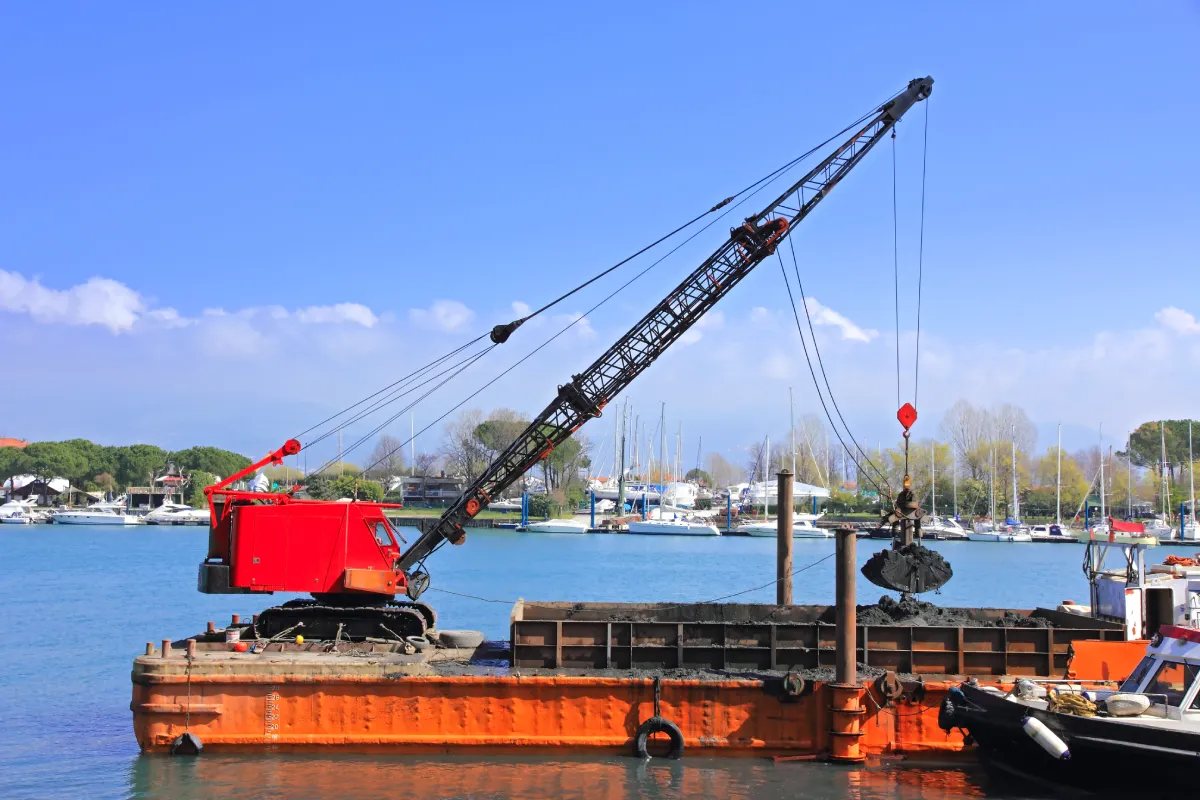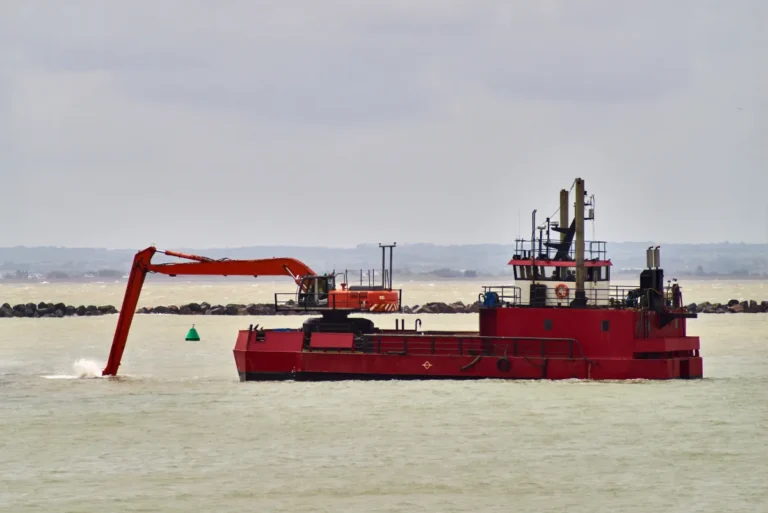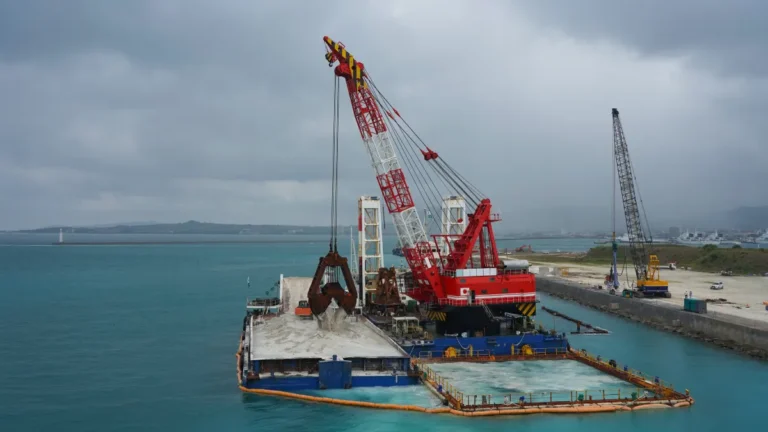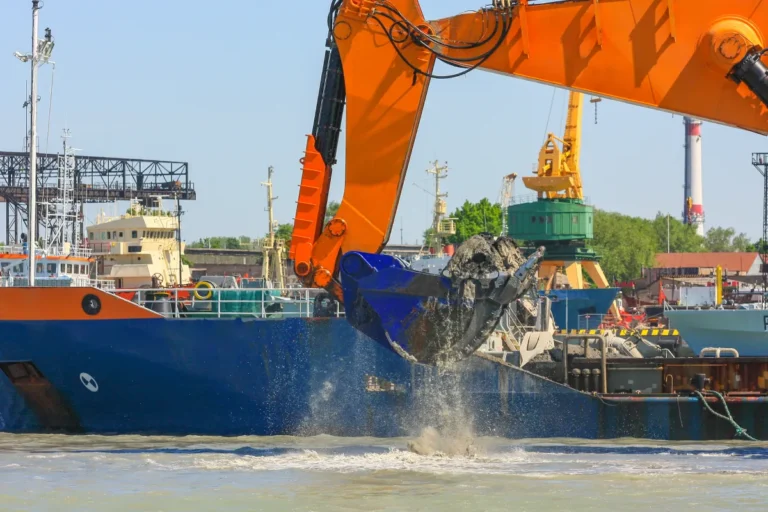Dredging services play a critical role in maintaining the functionality, safety, and environmental compliance of water bodies across industrial, municipal, and agricultural landscapes. From large-scale channel maintenance to precision pond dredging services, understanding the cost structures, operational benefits, and potential return on investment is key to making informed project decisions. This comprehensive guide explores the full scope of dredging services, covering types, pricing, equipment, and best practices, to help you plan smarter, reduce risk, and achieve long-term value.
Types of Dredging Services and Their Functional Scope
Understanding the various types of dredging services is crucial for selecting the most suitable approach for your project. From large-scale port operations to small-scale pond dredging services, the method and scope of work vary significantly based on project goals, environmental considerations, and budget.
Maintenance Dredging
Maintenance dredging is the most common form of dredge service used to restore depth and function to previously dredged areas. Over time, sediment accumulates in channels, harbors, reservoirs, and ponds, reducing water capacity and flow efficiency. Maintenance dredging ensures these waterways remain navigable and operational.
- Primary Purpose: Restore original depth and capacity
- Applications: Ports, marinas, canals, irrigation channels
- Frequency: Recurring, depending on sedimentation rates
- Keyword usage: Often bundled with pond dredging services in smaller applications
Capital Dredging
Capital dredging involves initial excavation to create new waterways or deepen existing ones beyond their natural depth. This is a one-time, high-volume dredging service typically associated with infrastructure development or major waterway expansions.
- Primary Purpose: Create new channels or increase depth
- Applications: Port expansion, bridge construction, flood control systems
- Key Characteristics: High sediment volume, longer timelines, higher cost per unit
Environmental Dredging
Environmental dredging focuses on removing contaminated sediments to restore ecological health. Unlike other dredging services, this process is governed by strict regulatory controls to minimize the resuspension of toxins or disruption to sensitive habitats.
- Primary Purpose: Mitigate pollution and restore aquatic ecosystems
- Applications: Industrial waterways, mining runoff areas, Superfund sites
- Special Measures: Turbidity curtains, sediment control systems, real-time monitoring
Specialized Services: Pond Dredging Services
Pond dredging services fall under a specialized category of small-scale dredge services that require precision, low-disturbance equipment, and environmental sensitivity. These services are ideal for:
- Golf course ponds
- Stormwater retention basins
- Farm irrigation ponds
- HOA and residential lakes
These dredging projects often use compact or amphibious dredges that can operate in confined spaces without disturbing nearby vegetation or wildlife. In pond dredging services, preserving the ecosystem is just as important as removing sediment.
Hydraulic vs. Mechanical Dredge Services
Both hydraulic and mechanical dredging methods are widely used, and the choice between them depends on the type of sediment, site access, and project goals.
Hydraulic Dredging
- Uses high-pressure pumps to create a slurry of sediment and water
- Ideal for fine materials (silt, sand, clay)
- Efficient for large, continuous volume removal
- Commonly used in dredge services for rivers, lagoons, and large ponds
Mechanical Dredging
- Relies on buckets, clamshells, or excavators to scoop and lift material
- Suitable for coarse materials (gravel, debris, vegetation)
- Allows precise removal in constrained or shallow areas
- Often used in pond dredging services where precision is critical
Comparison Table: Dredging Type vs. Application vs. Cost Range
| Dredging Type | Typical Application | Estimated Cost Range (USD/m³) |
| Maintenance Dredging | Ports, canals, reservoirs, retention basins | $10 – $40 |
| Capital Dredging | Harbor deepening, new infrastructure | $25 – $75 |
| Environmental Dredging | Contaminated site remediation | $40 – $100+ |
| Pond Dredging Services | Small lakes, stormwater ponds, HOA basins | $15 – $45 |
| Hydraulic Dredge Services | Rivers, lagoons, estuaries | $12 – $50 |
| Mechanical Dredge Services | Marinas, small ponds, and rocky areas | $20 – $60 |
Note: Pricing depends on multiple factors, including site access, sediment type, regulatory constraints, and equipment mobilization.
Breaking Down the Cost of Dredging Services
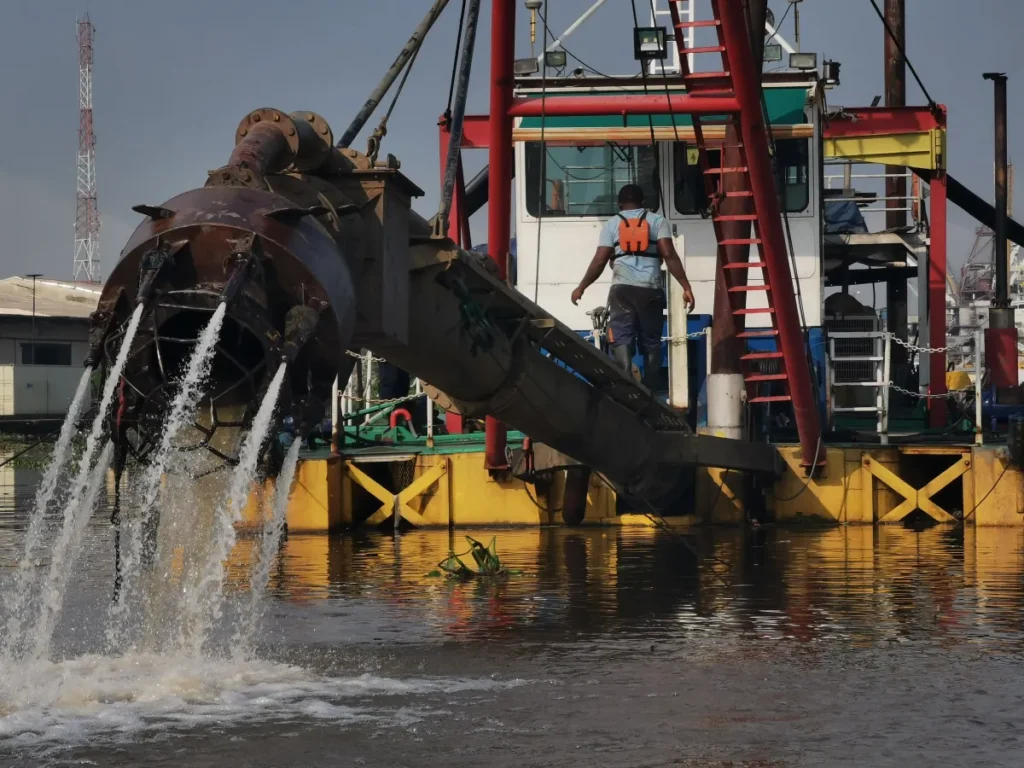
Understanding the cost structure of dredging services is crucial for effective budgeting, whether you manage a municipal reservoir, private pond, or industrial waterway. Dredging projects can range from small pond dredging services to large-scale coastal or river dredge services, with pricing that varies based on multiple interdependent factors.
Key Factors That Influence Dredging Costs
1. Mobilization and Demobilization
One of the largest upfront expenses is getting the equipment and crew to and from the job site. Mobilization costs can be disproportionately high for smaller dredging projects, especially remote pond dredging services, where accessibility is limited.
- Includes transport, setup, crew travel, and fuel
- Can be minimized by bundling projects regionally
2. Equipment Selection
The type of dredging equipment used—whether a cutterhead dredge, submersible slurry pump, amphibious excavator, or dredge sled—significantly affects the cost.
- Hydraulic dredging systems offer high-volume removal but require pipeline infrastructure
- Mechanical methods (e.g., excavator buckets, clamshells) may be cheaper for targeted removal
- Amphibious systems are ideal for marshy, shallow, or soft ground, but have higher operating costs
3. Project Duration and Volume of Material
Longer projects typically reduce the unit cost per cubic meter; however, total costs increase over time.
- Short-term projects (<1 week) tend to have higher per m³ rates due to mobilization overhead
- Bulk sediment removal lowers cost per unit, but increases total fuel and labor expenses
4. Sediment Type and Site Access
- Heavy clay, large debris, or rocky material requires stronger equipment, which slows production and increases wear on parts.
- Confined areas, shallow waters, or heavily vegetated ponds require custom or low-impact equipment, increasing cost and complexity.
5. Compliance, Permitting, and Environmental Constraints
Regulatory compliance can add both time and cost, especially for projects requiring:
- USACE or EPA permits
- Water quality monitoring (turbidity, pH)
- Wildlife and habitat protection measures
- Specialized environmental dredging services with low-disturbance techniques
6. Hidden and Variable Costs
- Standby time due to bad weather, site delays, or permit issues
- Fuel price fluctuations, especially for diesel-powered dredges
- Wear parts (cutter teeth, pump impellers, hose linings) that degrade during extended operations
These variables are often overlooked in early-stage cost estimates, but they can significantly impact ROI if not planned for.
Typical Cost Ranges for Dredging Services
| Service Type | Estimated Cost Range (USD/m³) | Notes |
| Small Pond Dredging Services | $15 – $45 | Includes mobilization, suited for <10,000 m³ projects |
| Medium-Scale Inland Dredging | $20 – $60 | Municipal ponds, rivers, stormwater basins |
| Large-Scale Dredging Services | $20 – $80 | Ports, reservoirs, estuarine systems |
| Environmental Dredging | $40 – $100+ | Contaminated sediment removal, high-compliance projects |
Tip: For small-scale projects, fixed pricing or day rates are often used instead of per m³ costs.
Core Benefits of Professional Dredging Services
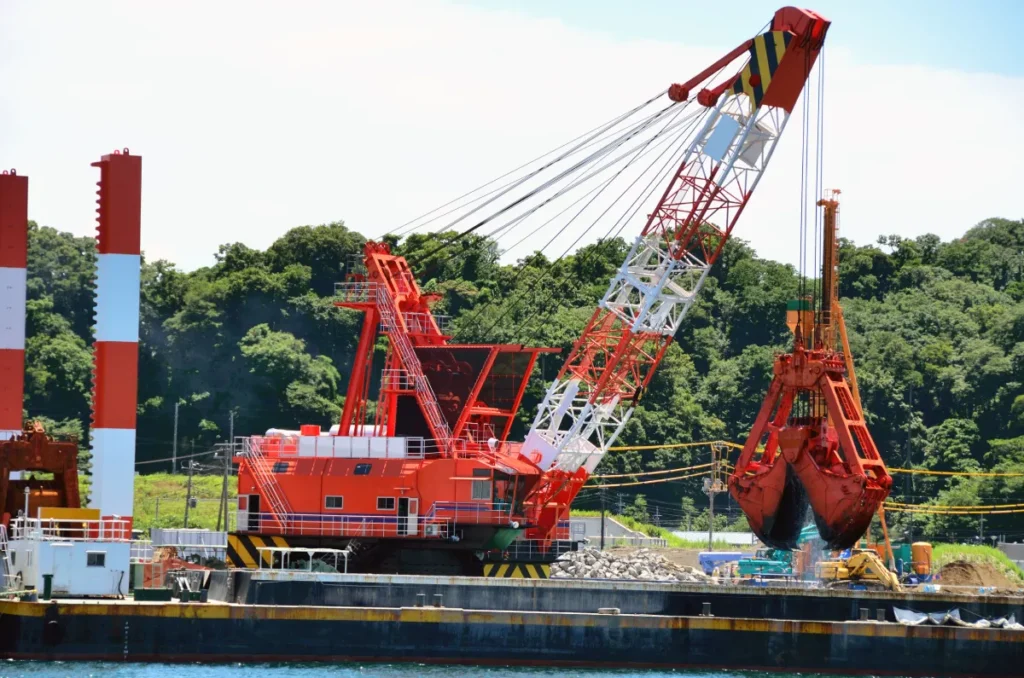
Investing in professional dredging services offers far more than just sediment removal. Whether you’re maintaining a stormwater retention pond, clearing a navigational channel, or restoring an industrial water body, the advantages span operational performance, environmental compliance, and long-term economic value. Properly executed pond dredging services and large-scale dredge services can dramatically improve water system health and infrastructure resilience.
Operational Benefits
1. Restored Depth and Capacity
Over time, silt, sand, and organic debris accumulate, reducing the holding capacity of water bodies. Dredging services restore design depth and cross-section, allowing systems to function as intended.
- Prevents overflow or backup during storms
- Improves storage volume for reservoirs and ponds
- Critical for municipal and agricultural systems where sedimentation is rapid
2. Improved Flow for Irrigation, Drainage, and Navigation
Clogged canals, ponds, or channels reduce water flow, which affects irrigation schedules and increases flood risk. Professional dredge services remove obstructions, improving hydraulic performance and flow velocity.
- Enhances farm irrigation efficiency
- Restores navigability in recreational and commercial waterways
- Reduces pump load and energy costs for water transfer systems
Environmental and Compliance Benefits
1. Sediment Containment
Dredging not only removes sediment but also helps isolate and properly dispose of potentially contaminated materials, especially in industrial or stormwater retention ponds.
- Limits downstream contamination
- Enables safe landfill or containment cell disposal
- Meets EPA and regional sediment quality guidelines
2. Turbidity Control
Professional dredging services implement best management practices (BMPs), such as turbidity curtains, real-time monitoring, and controlled slurry flow rates, to minimize sediment disturbance.
- Prevents water quality violations
- Protects aquatic life from suspended solids
- Critical for environmentally sensitive pond dredging services
3. Wetland and Ecosystem Restoration
Dredging plays a vital role in restoring degraded wetlands, ponds, and estuaries by removing invasive vegetation, organic muck, and re-establishing healthy depth profiles.
- Promotes native plant regrowth
- Supports fish spawning grounds and bird habitats
- Aligns with conservation and mitigation banking programs
Economic Advantages
1. Asset Preservation
Sediment buildup can put immense strain on dams, levees, culverts, and intake structures. Dredge services prevent structural damage by maintaining proper hydraulic conditions.
- Reduces erosion and seepage around infrastructure
- Avoids costly repairs or premature rebuilds
- Extends the life cycle of public and private assets
2. Avoiding Fines or Shutdowns
Regulatory bodies such as the EPA or local water boards can impose penalties for non-compliance related to water flow, sediment discharge, or pond overflow.
- Dredging ensures compliance with discharge permits.
- Reduces risk of citations, lawsuits, or project halts
- Especially important for municipal and industrial pond dredging services
How to Evaluate ROI in Dredging Projects
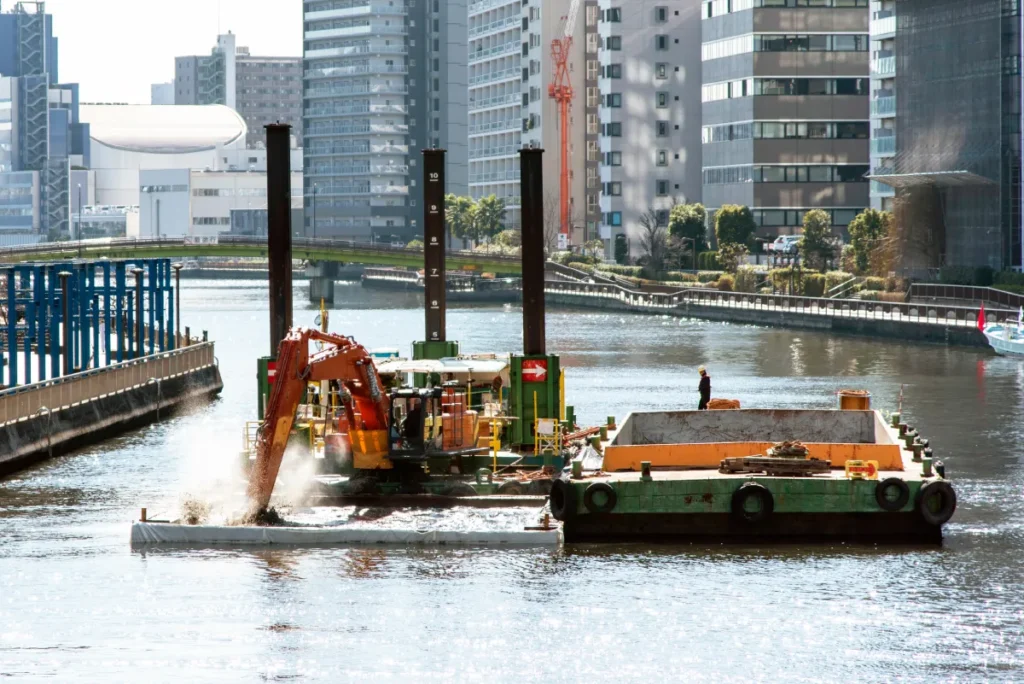
While dredging is often viewed as a necessary expense, it’s more strategic to assess it as an investment with measurable returns. Whether you’re engaging in large-scale dredge services or targeted pond dredging services, calculating return on investment (ROI) helps justify the budget, prioritize projects, and guide future planning.
Defining “Return” Across Industry Contexts
ROI in dredging isn’t one-size-fits-all. The benefits vary based on the type of asset being restored and the stakeholder’s operational priorities.
1. Municipalities: Flood Mitigation & Water Storage
- Return is measured by avoided flood damage, restored stormwater retention capacity, and regulatory compliance.
- Dredging services reduce overflow risk in urban drainage systems and improve emergency response readiness.
2. Industrial: Productivity Recovery & Equipment Longevity
- Return includes restored water flow to process systems, reduced pump cavitation, and minimized downtime.
- Eliminating sediment buildup enhances energy efficiency and reduces the frequency of mechanical equipment repairs.
3. Agricultural: Crop Yield Protection Through Drainage
- Return is reflected in increased field availability, fewer waterlogging incidents, and improved irrigation coverage.
- Effective pond dredging services in farm reservoirs can significantly boost seasonal output and reduce input costs.
Key Metrics to Track ROI in Dredge Services
To justify dredging costs and compare contractor bids, consider tracking the following ROI indicators:
| Metric | What It Measures |
| Cost per Cubic Meter Removed | Base unit cost for comparing bids or internal vs. outsourced services |
| Benefit-to-Cost Ratio (BCR) | Ratio of operational or financial gains to total dredging cost |
| Time-to-Operational Restoration | How quickly systems return to full function post-dredging |
| Maintenance Downtime Reduction | Decrease in unplanned outages or service interruptions |
| Compliance Risk Avoidance | Value of avoided fines, permit violations, or environmental damage |
Tip: Document conditions before and after the project—using photos, turbidity data, or bathymetric surveys—to support ROI evaluation and future budgeting.
Comparing In-House vs. Outsourced Dredge Services
One of the most critical decisions in project planning is whether to own and operate dredging equipment in-house or to outsource dredging services to a specialized contractor. This choice impacts cost structure, operational control, project flexibility, and long-term ROI. Whether you’re considering full-scale operations or niche pond dredging services, understanding the trade-offs can guide smarter resource allocation.
Capital Expenditure vs. Operating Expense
In-House Dredging (CapEx Model)
- Involves high upfront investment in dredge equipment, support gear (barges, booster pumps), and transport trailers.
- Costs are capitalized, but ongoing operational budgeting is required for labor, fuel, maintenance, and insurance.
- Suitable for organizations with frequent, large-scale dredging needs and internal project management capacity.
Outsourced Dredge Services (OpEx Model)
- Pay-as-you-go structure with lower upfront costs.
- Ideal for intermittent projects, smaller pond dredging services, or highly regulated environmental sites.
- Enables access to advanced dredging technologies without ownership burden.
Skillset and Training Requirements
- In-House Teams require specialized operators, mechanics, and compliance officers. Training must cover safety, dredge control systems, sediment disposal, and environmental protocols.
- Third-Party Contractors bring pre-certified teams familiar with diverse dredging conditions, local permitting processes, and real-time monitoring systems.
For municipalities or farms managing occasional pond dredging, outsourcing eliminates the need for in-house certification or staffing expansion.
Maintenance and Parts Inventory Burden
- Ownership entails stocking critical spares (such as pump impellers, wear plates, and hydraulic lines), conducting regular inspections, and mitigating downtime risk.
- Outsourced dredge services include built-in maintenance, with standby crews and backup systems to minimize interruptions.
If redundancy and uptime are essential, third-party providers often ensure faster response and equipment swaps compared to internal maintenance workflows.
When to Choose Pond Dredging Services Specifically
Not all dredging projects require large-scale equipment or deep excavation. In many cases, targeted pond dredging services are the optimal solution—especially when dealing with confined spaces, delicate ecosystems, or localized sedimentation issues. From golf courses to farm irrigation ponds, understanding when and why to invest in pond-specific dredging is essential for maintaining water quality, appearance, and function.
Ideal Applications for Pond Dredging Services
Pond dredging is best suited for small to medium-sized water bodies where full-scale dredge systems would be inefficient or damaging. Typical sites include:
- Golf course water hazards, where aesthetics and drainage are both critical
- Stormwater retention basins that frequently silt up and lose capacity
- Farm ponds and irrigation reservoirs are essential to agricultural operations
- HOA community lakes where recreational or visual quality is a concern
These environments demand precision dredging, often near landscaped areas, roadways, or structures—making general dredge services too aggressive or disruptive.
Signs It’s Time to Dredge a Pond
Certain conditions indicate the need for timely dredging. Ignoring them can lead to waterbody failure, fish kills, or regulatory issues.
- Excessive algae blooms caused by nutrient-rich sediment buildup
- Water stagnation or foul odors indicate poor circulation
- Shoreline overgrowth or shrinking surface area due to encroaching vegetation and sediment
- Flooding after light rain due to loss of holding capacity
Regular bathymetric surveys or sediment probing can help property managers or municipalities track when a pond has reached critical sediment thresholds.
Equipment Options Tailored for Pond Dredging
Unlike deepwater or high-volume dredging, pond dredging services require compact, low-impact, and maneuverable equipment:
- Small submersible slurry pumps mounted on floating platforms or skids
- Long-reach excavators with specialized buckets to access from the pond banks
- Amphibious excavators for swampy or partially drained basins
- Mini dredge sleds for lined ponds, lagoons, or tight residential spaces
These systems are designed to minimize damage to pond liners, aquatic plants, and nearby infrastructure while ensuring efficient sediment removal.
Advantages of Hiring Specialists in Sensitive Environments
Ponds—especially in residential or landscaped areas—are environmentally and politically sensitive zones. Engaging professional pond dredging services offers several advantages:
- Expert handling of permits and regulatory compliance
- Use of turbidity curtains, silt fences, and dewatering bags to contain disturbance
- Eco-conscious disposal methods for sediment reuse or composting
- Experienced crews that can operate in tight footprints with minimal disruption to the surroundings
Tips to Maximize the Value of Dredging Services
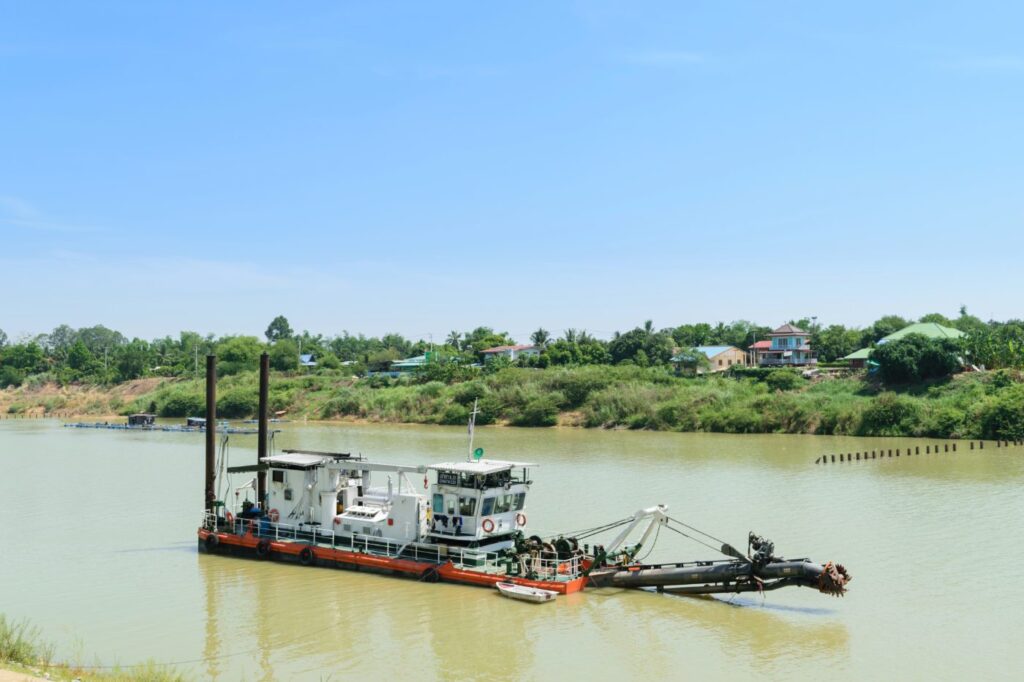
Whether you’re managing a major infrastructure project or a localized pond restoration, maximizing the benefits of your dredging services requires more than just deploying equipment. Strategic planning, real-time controls, and thorough post-project validation are essential to achieving optimal performance, environmental compliance, and long-term cost efficiency.
Pre-Dredging Best Practices
1. Conduct a Hydrographic Survey
A pre-dredging hydrographic survey maps the current depth and topography of the waterbody. This allows teams to:
- Define sediment volume and removal areas
- Detect submerged structures or obstructions
- Establish baseline data for post-dredging validation
This step is essential for both large-scale dredge services and precision pond dredging services.
2. Perform Sediment Testing
Understanding the type and quality of sediment helps in:
- Selecting the appropriate dredging method (hydraulic vs. mechanical)
- Determining if the material is contaminated and requires special disposal
- Complying with environmental regulations (especially in EPA-monitored zones)
3. Complete Permitting and Stakeholder Consultation
Permit delays are a common cause of dredging project overruns. Ensure:
- All USACE, EPA, or local water board permits are secured
- Property owners, municipalities, or regulatory agencies are consulted early
- Any sensitive habitats or species are accounted for in the project plan
During Dredging Execution
1. Leverage RTK GPS for Real-Time Positioning
Modern dredging services use RTK GPS and automation systems to maintain precise dredge paths and consistent depth cuts. This:
- Reduces rework and over-dredging
- Optimizes production rate per fuel/hour
- Supports digital documentation for compliance audits
2. Implement Turbidity Curtains and Environmental Controls
Minimize environmental impact by using:
- Turbidity curtains to prevent sediment dispersion
- Silt screens or barriers in sensitive zones
- Real-time water quality monitoring (turbidity, pH, DO)
This is particularly critical for pond dredging services in areas near residential or ecologically sensitive locations.
Post-Dredging Actions for Long-Term ROI
1. Conduct Bathymetric Validation
A post-dredging survey confirms whether:
- Target depths were achieved
- Sediment was removed uniformly
- No hazardous conditions or debris were left behind
These records help support compliance and warranty claims.
2. Manage Dewatering and Sediment Disposal
After removal, dredged material must be dewatered and managed:
- Use geotextile dewatering bags, ponds, or press systems
- Evaluate reuse options, including land application, fill, and composting.
- Ensure disposal complies with local and federal regulations
3. Set Up a Long-Term Maintenance Schedule
Even after a successful dredging project, sedimentation will resume over time. Establish a maintenance plan:
- Periodic inspections or drone surveys
- Sediment probes or depth checks are performed annually
- Minor dredging touch-ups every 3–7 years, depending on inflow
Common Cost Pitfalls and How to Avoid Them
Even well-planned dredging projects can go over budget due to overlooked or underestimated cost elements. Whether you’re coordinating full-scale dredge services or targeted pond dredging services, recognizing these common cost pitfalls—and proactively addressing them—can protect your budget, timeline, and ROI.
1. Underestimating Mobilization and Demobilization Costs
Mobilization—the process of transporting and setting up dredging equipment—can account for 20–40% of total project cost, especially for remote or small-scale projects.
Why does it happen:
- Improper site inspection leads to incorrect assumptions about equipment size or access route
- Lack of coordination on crew travel, local lodging, or fuel logistics
How to avoid it:
- Request detailed mobilization line items in every dredging service quote
- Bundle nearby projects or use local pond dredging services to reduce travel and transport costs
- Consider equipment that offers modular transport options
2. Poor Site Access Increasing Equipment Requirements
Limited or obstructed site access can significantly impact the type of dredging equipment required, leading to increased rental fees or the need for custom machinery.
Examples:
- Narrow roads restrict heavy equipment delivery
- Steep banks or fragile liners prevent typical barge deployment
- Urban or landscaped areas require low-impact, compact solutions
Solution:
- Conduct a pre-project access audit and include it in scope
- Choose equipment suited for tight spaces (e.g., dredge sleds, long-reach excavators, or amphibious units)
3. Ineffective Material Disposal Planning
Disposing of dredged sediment is not a one-size-fits-all process. Failing to plan for proper dewatering and material handling can stall the entire operation or lead to regulatory penalties.
Key mistakes:
- No designated disposal site or permit for sediment dumping
- Misidentifying contaminated sediment, leading to unexpected handling costs
- Insufficient drying time is impacting hauling schedules
Best practices:
- Perform sediment testing in advance
- Designate and prepare dewatering zones before dredging begins
- Explore beneficial reuse options (e.g., land application, landscaping fill)
4. Not Bundling Dewatering or Environmental Services in the Quote
Dewatering, turbidity management, and post-dredging cleanup are often priced as optional add-ons—but they are essential to the success of a project.
Impact:
- Surprise change orders during execution
- Delays in returning the site to operational condition
- Missed regulatory deadlines or water quality violations
Tip:
- Insist on comprehensive quotes that include environmental compliance, sediment dewatering, and site restoration.
- Confirm that contractors offer turnkey dredging services or clearly list third-party scopes.
Investing Smartly in Dredging Service
Whether you’re managing a retention pond, restoring a wetland, or deepening an industrial waterway, maximizing the ROI of your dredging project starts with the right strategy and experienced support. By recognizing hidden cost drivers, selecting appropriate equipment, and working with qualified professionals, you can avoid budget overruns and achieve long-lasting results. At CA Dredge Pros, we specialize in turnkey dredging services tailored to California’s diverse regulatory and environmental conditions. Connect with us to discuss your project goals, and let us help you execute a safe, efficient, and cost-effective dredging solution.


